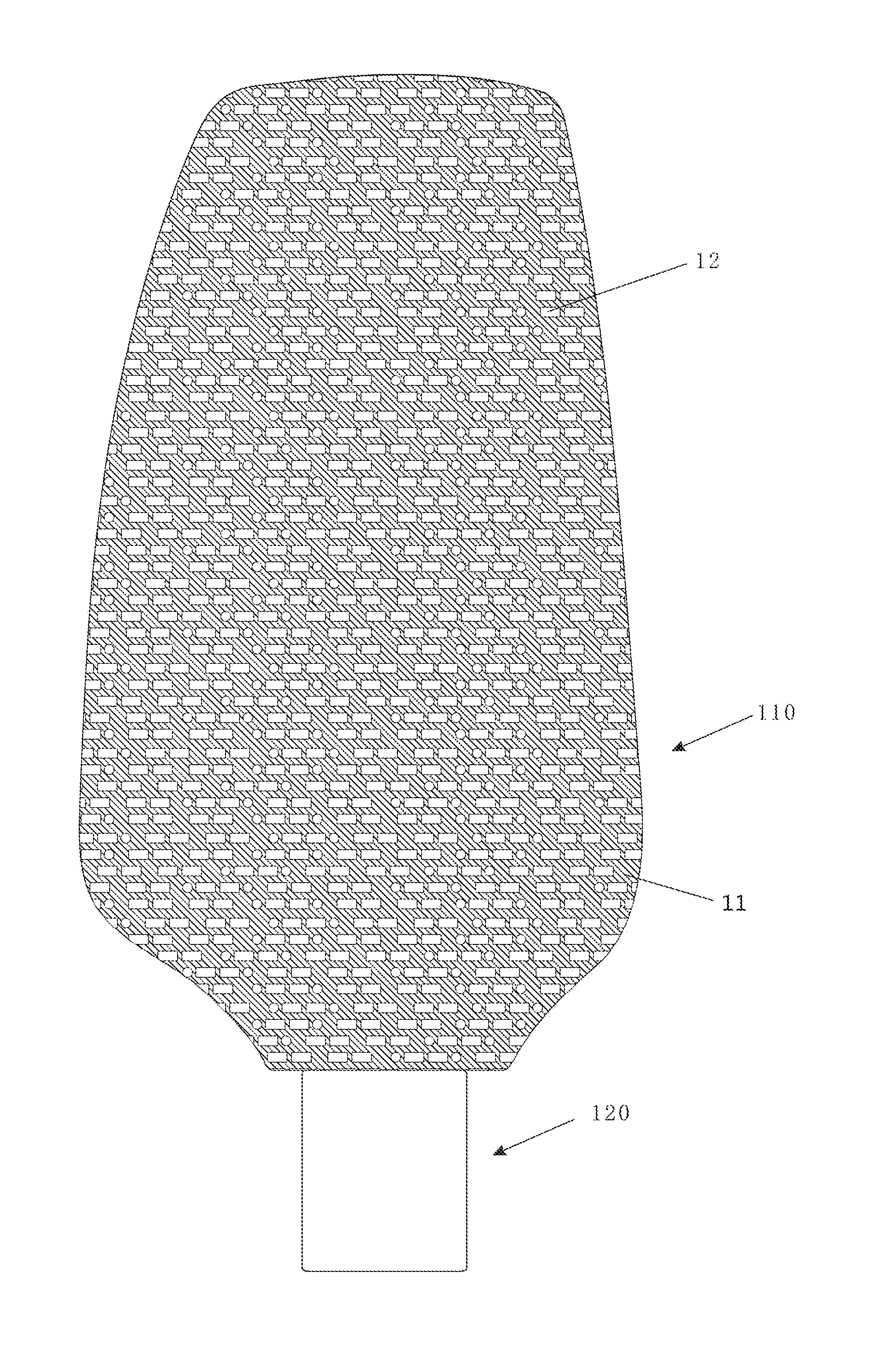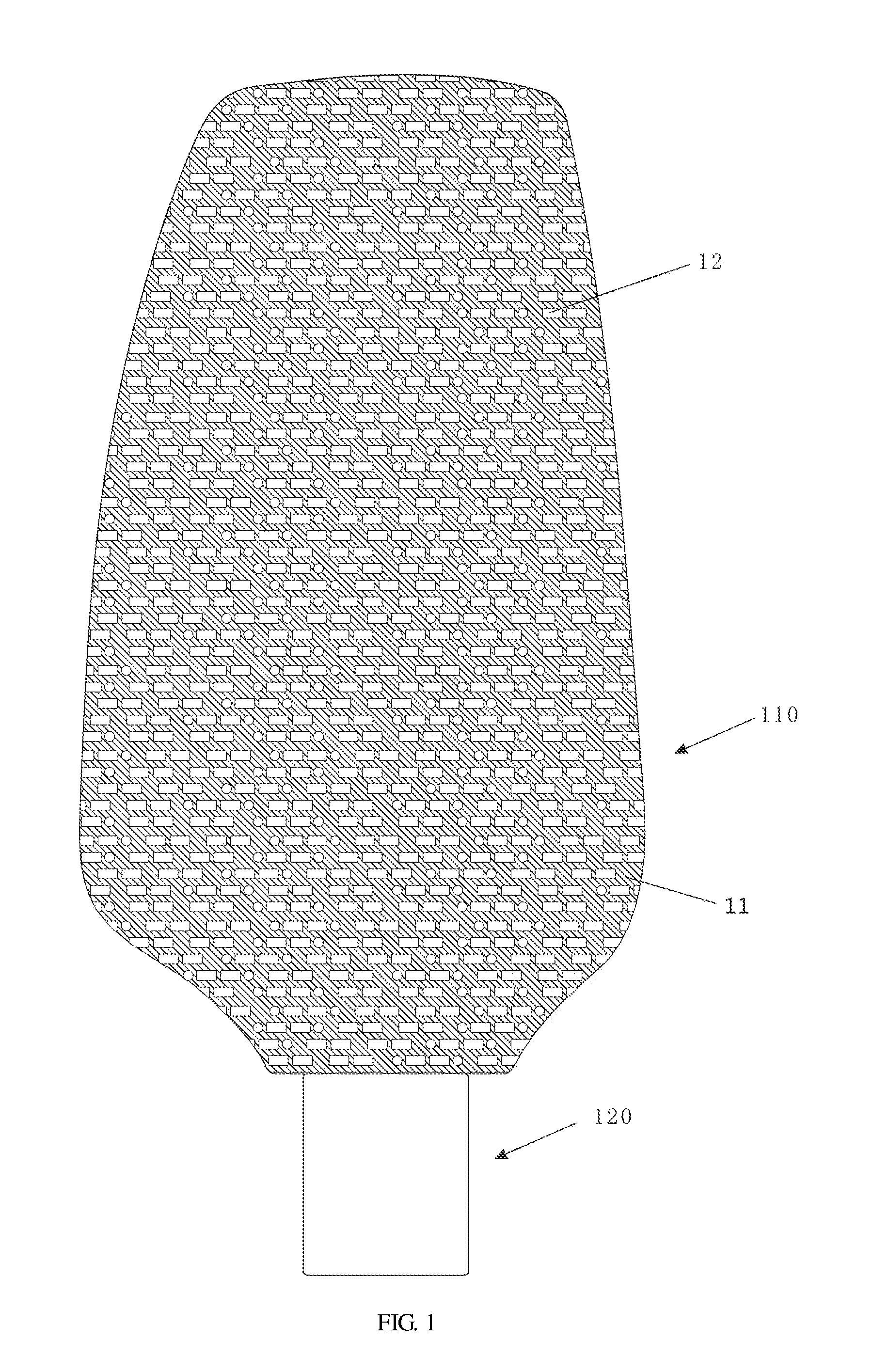Kitchenware with patterns on its surface and manufacture method thereof
- Summary
- Abstract
- Description
- Claims
- Application Information
AI Technical Summary
Benefits of technology
Problems solved by technology
Method used
Image
Examples
first embodiment
[0026]As shown in FIG. 1, a kitchenware with patterns on its surface in the present invention comprises a hand-held part 120 and a food contact part 110. Preferably, the food contact part 110 is made of plastics or silicone rubber. The hand-held part 120 and the food contact part 110 can be manufactured by means of injection moulding, or compression moulding etc. Then a color layer is covered on the surface of the food contact part by spraying, or silk screen etc., that is, a color layer for covering is set on the surface of food contact part 110. The color layer is divided into a first region 11 without a process of laser engraving and a second region 12 formed by laser engraving. The first region 11 is the region with oblique lines in the food contact part 110 in FIG. 1, and the second region 12 is the blank region in the food contact part 110 in FIG. 1.
[0027]The thickness of the second region 12 is smaller than that of the first region 11; preset patterns are formed by the first ...
second embodiment
[0029]As shown in FIG. 2, the kitchenware with patterns on its surface in the present invention comprises a hand-held part 220 and a food contact part 210. Preferably, the food contact part 210 is made of plastics or silicon resin. The hand-held part 220 and the food contact part 210 can be manufactured by means of injection moulding, or compression moulding etc. Then a color layer is covered on the surface of the food contact part by means of spraying, or silk screen etc., that is, a color layer is covered on the surface of the food contact part 210. The color layer is divided into a first region 21 without a process of laser engraving and a second region 22 formed by laser engraving. The second region 22 is divided into a first subregion 23 and a second subregion 24 according to the differences of the thickness of the color layer. The first region 21 is the region with oblique lines in the food contact part 210 in FIG. 2, the first subregion 23 is the blank region in the food cont...
third embodiment
[0032]As shown in FIG. 3, the kitchenware with patterns on its surface in the present invention comprises a hand-held part 320 and a food contact part (not shown in FIG. 3). Preferably, the hand-held part 320 is made of plastics or silicon resin. The hand-held part 320 and food contact part can be manufactured by means of injection moulding, or stamping etc. Then a color layer is covered on the surface of the hand-held part by means of spraying, or silk screen etc., which means that a color layer is covered on the surface of the hand-held part 320, that is, there is a color layer covering the surface of the hand-held part 320. The color layer is divided into a first region 31 without a process of laser engraving and a second region 32 formed by laser engraving. The first region 31 is the region with oblique lines in the hand-held part 320 in FIG. 3, and the second region 32 is the blank region in the hand-held part 320 in FIG. 3.
[0033]The thickness of second region 32 is smaller tha...
PUM
| Property | Measurement | Unit |
|---|---|---|
| Fraction | aaaaa | aaaaa |
| Fraction | aaaaa | aaaaa |
| Thickness | aaaaa | aaaaa |
Abstract
Description
Claims
Application Information
 Login to View More
Login to View More - R&D
- Intellectual Property
- Life Sciences
- Materials
- Tech Scout
- Unparalleled Data Quality
- Higher Quality Content
- 60% Fewer Hallucinations
Browse by: Latest US Patents, China's latest patents, Technical Efficacy Thesaurus, Application Domain, Technology Topic, Popular Technical Reports.
© 2025 PatSnap. All rights reserved.Legal|Privacy policy|Modern Slavery Act Transparency Statement|Sitemap|About US| Contact US: help@patsnap.com



